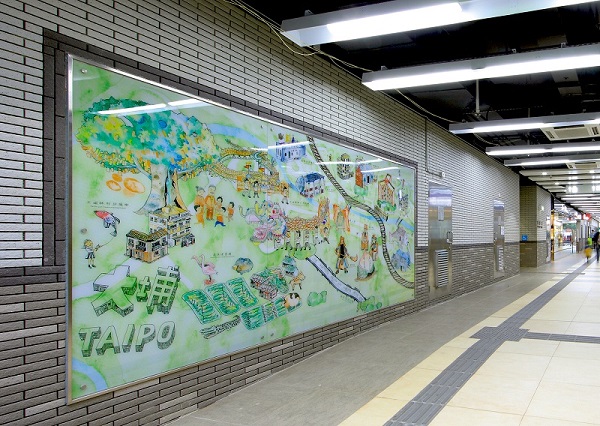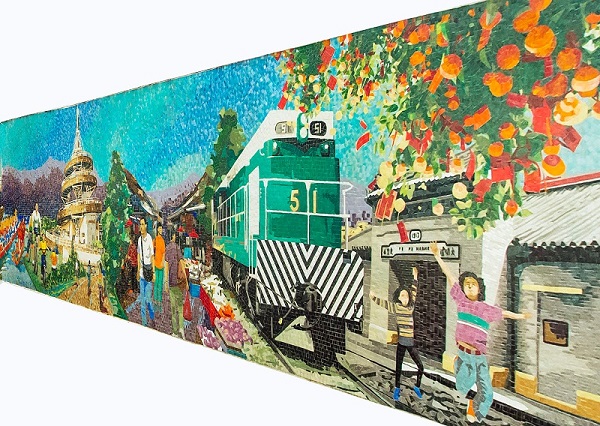For many years the Housing Authority (HA) has been engaging the community in developing works of art for its public housing properties. Community artwork programmes in our estates have involved collaboration among residents, students, local communities, art groups and our own staff. These creative works not only become attractive features of our estates, but also enhance the living environment and strengthen the sense of community among residents.
Art and Nature Conservation at Queens Hill Estate
Queens Hill Estate is developed from abandoned barrack facilities. With toil and effort of Housing Authority, it now becomes a vibrant community full with cultural assets, art installations and preserved trees.
Queens Hill Estate offers a fascinating selection of artworks and conservation attractions that deserve our appreciation. To enhance enjoyment of visitors, we have planned a viewing route linking up these artworks and attractions. We invited local artists and craftsman to use the retained wood and artefacts preserved from the former Queen's Hill barrack site to create artworks and benches of various styles under the common theme "Roots and Origin", which are placed in different parts of the estate, representing the history, culture and transformation of Queen's Hill. Two of these artworks are created by students from the Fanling Government Secondary School under guidance of the artists. To give new experience to the visitors, we adopt AR technology to the artworks called "The Trees of Life" and "Our Home", where birds and trains will come out if they are viewed through smart phones on site.
With careful planning, over a hundred of existing trees are preserved on site and some with high amenity value. For example, Ficus elastica at Lung Ma Road entrance, Cinnamomum camphora next to the public transport terminus and Araucaria cunninghamii at the central plaza.
Each artwork, bench and retained high amenity value tree has a sign aside to introduce its general information or design theme. Visitors can scan the QR code on the sign to read more details on the designated Queens Hill Estate's mini-website.
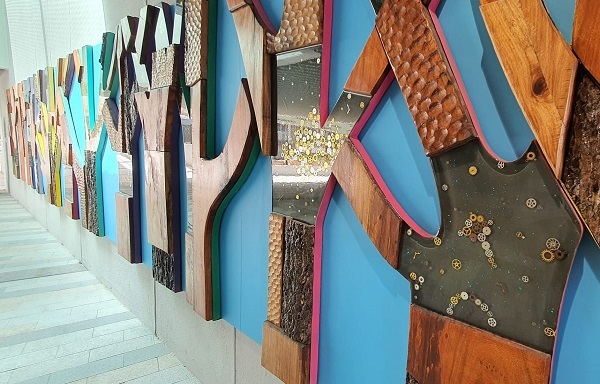 Artwork- Moments in the WoodsArtwork- The Trees of Life
Artwork- Moments in the WoodsArtwork- The Trees of Life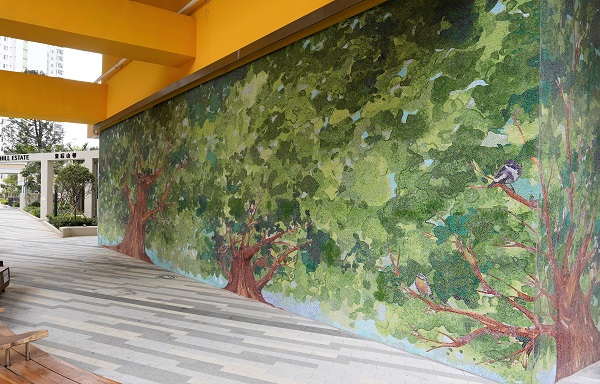 Artwork- The Trees of LifeArtwork- Life
Artwork- The Trees of LifeArtwork- Life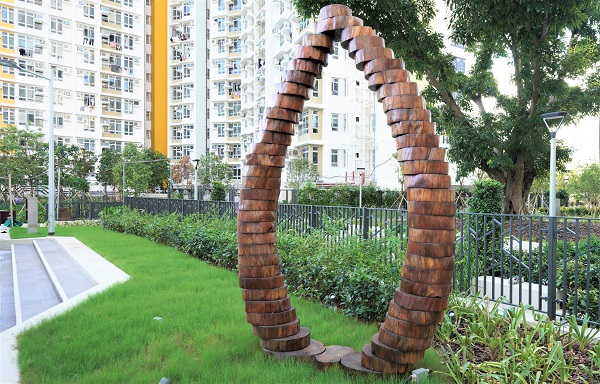 Artwork- Life
Artwork- Life
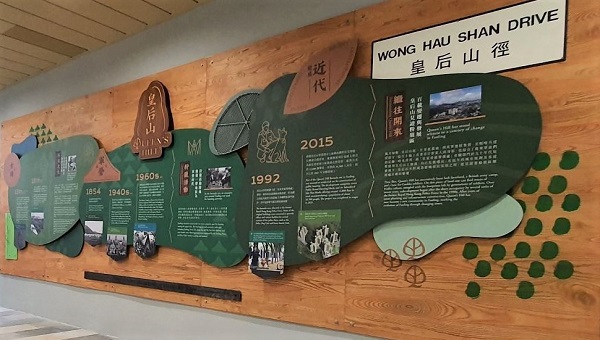 'Old Days•New Scenes' presents different periods of development in Queen's Hill.Wooden benches designed in response to the shapes of the tree trunks used to create them, are situated near Wong Wui House.
'Old Days•New Scenes' presents different periods of development in Queen's Hill.Wooden benches designed in response to the shapes of the tree trunks used to create them, are situated near Wong Wui House.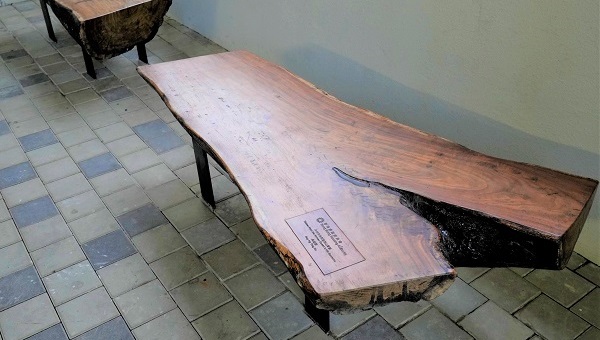 Wooden benches designed in response to the shapes of the tree trunks used to create them, are situated near Wong Wui House.Camphor Tree is a native species in Hong Kong. The crown of the tree is board with a captivating silhouette and all parts of the plant are camphor-scented.
Wooden benches designed in response to the shapes of the tree trunks used to create them, are situated near Wong Wui House.Camphor Tree is a native species in Hong Kong. The crown of the tree is board with a captivating silhouette and all parts of the plant are camphor-scented.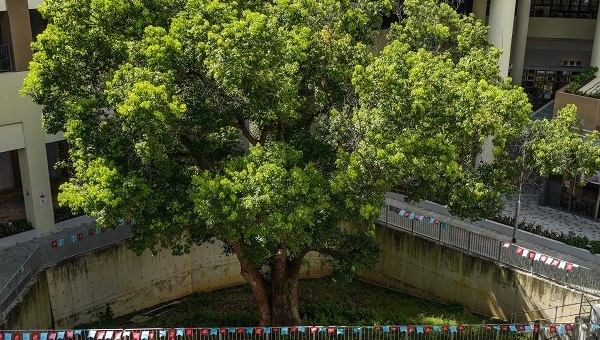 Camphor Tree is a native species in Hong Kong. The crown of the tree is board with a captivating silhouette and all parts of the plant are camphor-scented.
Camphor Tree is a native species in Hong Kong. The crown of the tree is board with a captivating silhouette and all parts of the plant are camphor-scented.
Public Art Installations at On Tai Estate
Located in a site which was formerly the Anderson Road Quarry, On Tai Estate was completed in 2018. There is an exhibit of an old machine component taken from the quarry. Also, an artwork named "My Dream Community" is placed at the entrance of the market in the estate. It is made of smaller artworks by students who participated in the Anderson Road Quarry Public Engagement. The base component of the artwork is an axis for a conveyer belt used at the former Anderson Road Quarry. The art piece symbolises the partnership between the HA and the community.
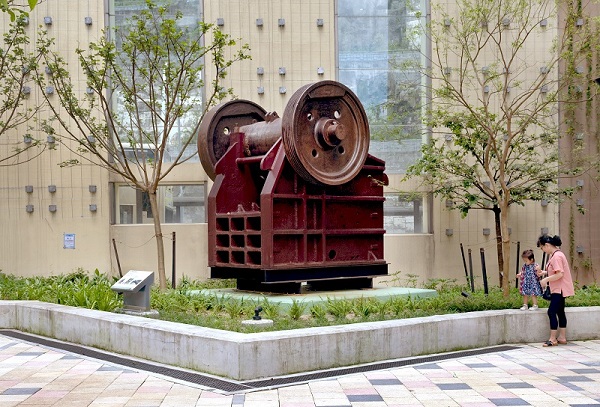 An exhibit of an old machine component used at the Anderson Road Quarry.My Dream Community symbolises the partnership between the HA and the community.
An exhibit of an old machine component used at the Anderson Road Quarry.My Dream Community symbolises the partnership between the HA and the community.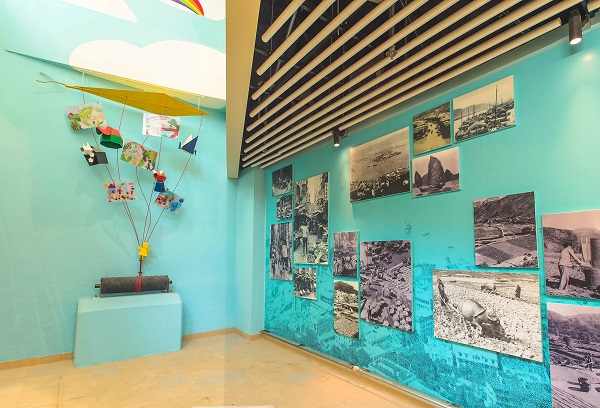 My Dream Community symbolises the partnership between the HA and the community.
My Dream Community symbolises the partnership between the HA and the community.
Community Artwork at Po Heung Estate
Po Heung Estate in Tai Po was completed in 2016. Community artwork featuring local landmarks and themes was displayed along a 24-hour pedestrian passage in the estate. It was a successful outcome of a community artwork programme in collaboration with the local community. Students of local schools were invited to create public artworks. Besides adding beautiful decoration to the neighbourhood, the programme let students show their talent and creativity while also enhancing their sense of belonging to the district.
Tung Chung Artwalk
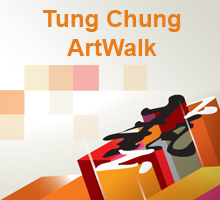
Tung Chung Artwalk at Yat Tung Estate is the first public art garden established in a public housing estate, bringing art into the everyday life of residents while also adding attraction to the area.
A joint initiative of the Housing Authority and the Leisure and Cultural Services Department, Tung Chung Artwalk is home to a collection of 26 artworks by local artists who have drawn their inspiration from Tung Chung's natural landscape, local culture, historic relics, and the dynamics of its development from a fishing village to a vibrant new town.
The 26 artworks were selected in two phases from a total of 316 outstanding submissions from local artists. They were installed in Yat Tung Estate in 2002 and 2006 respectively. The Artwalk is open all year round. Come take a leisure stroll and enjoy these creations of local masters.
Paintings in Public Housing
Other works of art worth visiting are the mural and stone paintings displayed in public housing estates such as Cheung Wang and Sau Mau Ping South. Most of them have been created with the participation of the local community.
Giant Mural at Cheung Wang Estate
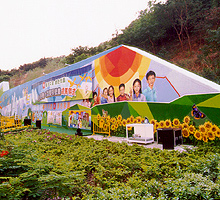
The giant mural at Cheung Wang Estate, Tsing Yi was unveiled in December 2004 to commemorate the 50th anniversary of public housing development in Hong Kong.
With a length of 128 metres (m), it is the biggest ever mural produced in a public housing estate. It is the joint effort of 600 people including public housing residents, students, kaifongs in the neighbourhood, and housing staff. They have used rich colours and fascinating patterns to portray the different designs of public housing and their aspirations for green and sustainable living.
Painted Stones in Sau Mau Ping South
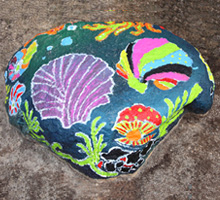
Launched in 2010 to engage the local community in beautifying Sau Mau Ping South Estate, the Stone Painting project brought together more than 100 residents, students and artists to paint 20 indigenous boulders in the estate.
While secondary school students expressed their vision of an ideal living environment through colourful images on 12 stones, residents and young artists cooperated in painting another eight boulders along the theme of marine life and nature conservation.
The series of activities, comprising painting workshops, design competitions and on-site work, has not only stimulated the participants' interest in public art, but also boosted their sense of belonging. And of course, it has left the estate with a prettier living environment.

